Purple Cannabis Strains
The Ultimate Guide to Purple Marijuana Strains.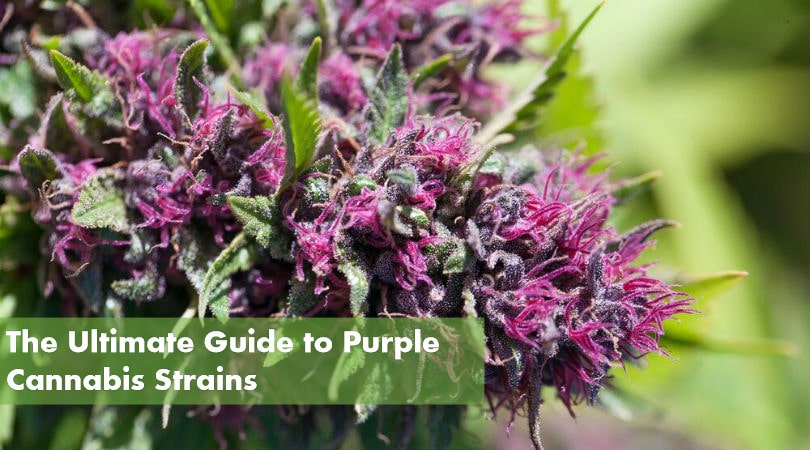 Marijuana comes in different colors depending upon the nature of the environment it is grown in, the temperature and a slew of other factors. One of the most sought after color these days among growers and smokers alike is purple, not only due its astonishingly attractive appearance but also the vibes it gives you when smoked.
Marijuana comes in different colors depending upon the nature of the environment it is grown in, the temperature and a slew of other factors. One of the most sought after color these days among growers and smokers alike is purple, not only due its astonishingly attractive appearance but also the vibes it gives you when smoked.
The smoke produced by the purple strain is extremely strong and of the highest quality due the high levels of THC. The flowers of purple cannabis can dazzle the viewer with their sparkly, glittery and exotic look. This, combined with the otherworldly sensations it provides, has made purple cannabis a favorite among cannabis lovers in a very short time.
What Makes Them Purple?
Until recently, the exact theory behind the cannabis strains turning purple was not known. They used to simply turn purple naturally in specific temperatures when growing outdoors and being exposed to cold. The growing interest and demand from the cannabis industry have led to research to find out what exactly makes them purple. This has enabled selective breeding programs that have produced cannabis strains that turn purple even in normal conditions, much to the delight of purple marijuana lovers!
The Science Behind The Purple Color
The green color in plants comes from a pigment called chlorophyll which by nature tends to break down in cold conditions. Another pigment that affects the colors in a plant is called Anthocyanin and is known to be the main culprit behind the purple colored strains. Anthocyanin is present in all parts of the plant including the leaves, stems, roots, flowers and fruits.
Depending on the genetics of a particular cannabis plant, anthocyanin may overcome the effects of chlorophyll and turn the color of the plant into something other than green during the latter part of the flowering period when chlorophyll dies. What color the plant will eventually take is controlled by the pH levels of anthocyanin in that particular seed.
• Acidic pH turns the plant red.
• Neutral pH leaves a purple hue.
• Alkaline pH makes the plan blue.
How Cold Weather Helps
When the days become shorter during the winters, the natural process of photosynthesis is slowed down as light-dependent plants are signaled to stop producing chlorophyll. If the timing is right, the flowering period coincides with the dissipation of chlorophyll from the plant which allows the anthocyanins to kick in and impose their color on the cannabis strains.
How to Grow Purple Cannabis Strains
Whether you are trying to grow purple cannabis for personal reasons such as to impress your friends or simply to enjoy its distinct taste, or doing it for business reasons and serving the needs of your customers, it is essential to know the right way to grow it. When growing purple strains, you do not only want to achieve the purple color but also want the distinct taste that only a perfectly grown strain can give.
Let’s dive right into the exact method that you can follow to grow the unique and perfect purple-hued marijuana.
The Wrong Approach To Grow Purple Marijuana Strains
Some growers, knowingly or unknowingly, make the mistake of inducing purple color by depriving the plant of oxygen, carbon dioxide or increasing the nitrogen levels. This rarely works and you are more likely to lose your crop instead of getting a purple color. Some people also try artificial methods such as food coloring to dye the plant and hoping for the best. Needless to say, this is not a good reliable or long term approach. Changing the light levels or the amount of water for the plants is also not a great way to achieve purple strains.
The Right Approach To Grow Purple Marijuana Strains
Like most things in life, good things do not come easy and that is true in this case as well. Growing the perfect purple plant requires added effort and extra care from the grower but it is well worth it.
Follow this step by step guide that we have perfect over a long period of time to ensure that you are fully equipped with all the necessary information.
STEP 1: Choosing the Right Cannabis Seeds
The first and, without a doubt, the most important part of growing purple cannabis strains is selecting the correct seed. To achieve purple hue, the seeds must have the genetic ability to produce anthocyanin, the pigment that gives the purple color to plants in the later stages of cultivation.
Through evolution, some plants have developed the natural ability to reduce chlorophyll production towards the end of their growth cycle. In other cases, this can be achieved by exposure to cold temperature but the tendency to produce the purple colored pigment is a must-have when deciding on what seeds to choose for cultivating purple cannabis plants.
STEP 2: Providing the Right Temperature
With correct seeds at your disposal, it is time to grow your plants in just the precise temperature enabling the anthocyanin to take its effect and overcome the green color of chlorophyll. Anthocyanin pigments are produced naturally throughout the course of the plant growth but their effect is hidden due to the comparatively stronger influence of green chlorophyll pigments.
Our aim is to reduce the effects of green colored chlorophyll pigments as much as we can and let the purple pigments take over.
During the fall months, the green pigments tend to break down and this is when anthocyanin begins to take its effect. This is when getting the right DIF (Differential temperature) enables the plant to turn purple. Ideally, the difference between day and night temperatures should be 30 degrees. This means that if your daytime temperature is 80, the night temperature should be set to 50. The ideal night cycle temperature during the flowering period is believed to be below 10 degrees Celsius or 50 degrees Fahrenheit.
If you do all of this correctly, the bud usually begins to change into purple color two weeks before the harvest.
General Tips On Growing Purple Cannabis Strains
1. In case the plants are growing too slowly, it is recommended to test the soil for suitability and make sure you are using the right fertilizers. Many growers can get demotivated and lose hope when the only problem is not making sure that the soil quality is up to the mark and choosing the wrong fertilizers.
2. You can grow the plant indoors as well as outdoors but it is always best to keep it indoors since you can control the environment easily and keep it safe from external factors such as animals, kids or jealous neighbors.
3. Purple marijuana plant can grow as high as two to three feet so take that into account while setting up your cultivation facility.
4. Unless going into a Cure Process, The best time to enjoy your purple cannabis is when it is almost nearing the harvest stage so be sure to plan your activities accordingly to get the most out of it, be it sharing the good stuff with your friends or selling it off to your customers.
Health benefits of Purple Cannabis
Aside from the recreational uses of purple cannabis strains, the Anthocyanins found in them, are known to carry a great number of health benefits such as:
• Powerful antioxidant properties
• Pain relief properties
• Neuroprotective properties
• Anti-inflammatory properties
Some other useful properties purple strains are thought to possess but that are not yet backed by sufficient scientific research are
• Reduction in chronic diseases
• Improved cardiovascular health
Obesity prevention
In short, if ample resources are brought to use and correct measures are taken to discover the mystery of increased anthocyanin production in cannabis in cold environments and concrete evidence of its positive effects on human health is brought to light, nothing can stop purple cannabis from taking the crown of the most popular cannabis strain in the world.

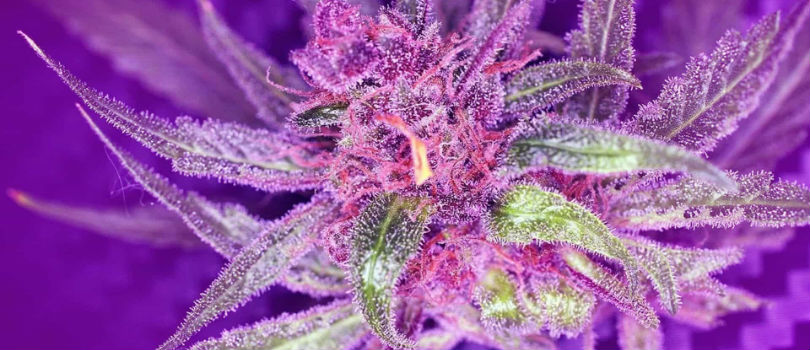
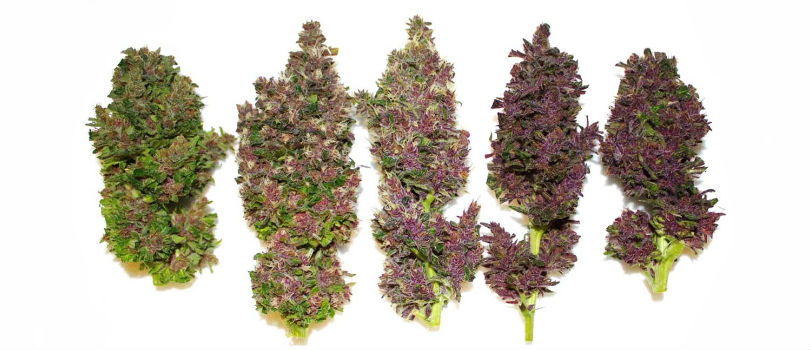
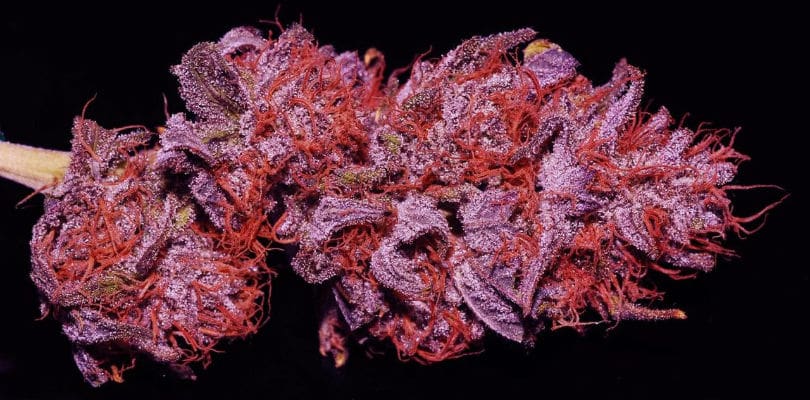
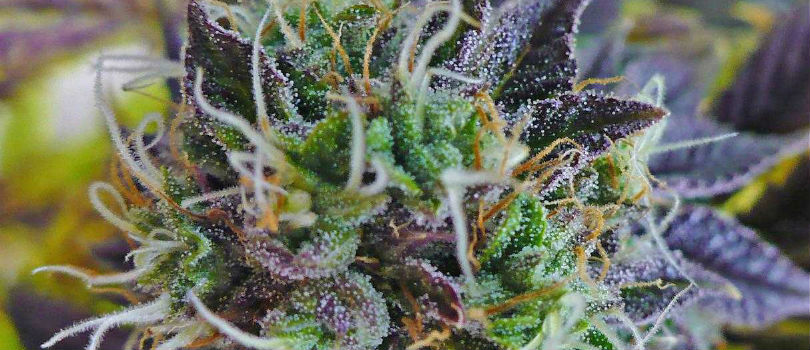
Hi i Am after cross breeding have you any purple male seeds thanks